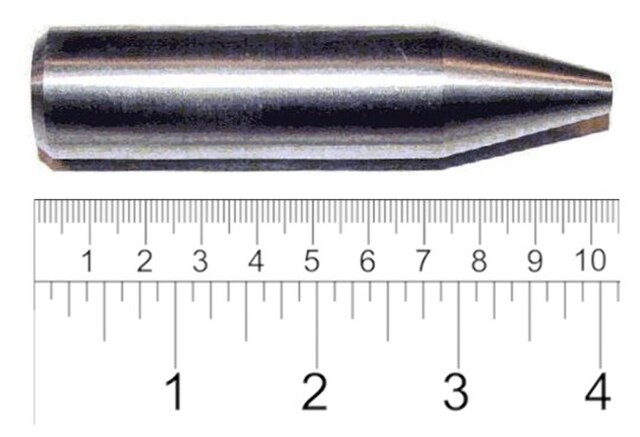Depleted uranium is uranium with a lower content of the fissile isotope 235U than natural uranium. Natural uranium contains about 0.72% 235U, while the DU used by the U.S. Department of Defense contains 0.3% 235U or less. The less radioactive and non-fissile 238U constitutes the main component of depleted uranium.
The DU penetrator of a 30 mm round
Mark 149 Mod 2 20mm depleted uranium ammunition for the Phalanx CIWS aboard USS Missouri.
Excerpt from a 1998 evaluation of environmental exposure to depleted uranium in the Persian Gulf by the US Department of Defense
Image: DUF6 storage yard far (cropped)
Uranium is a chemical element; it has symbol U and atomic number 92. It is a silvery-grey metal in the actinide series of the periodic table. A uranium atom has 92 protons and 92 electrons, of which 6 are valence electrons. Uranium radioactively decays, usually by emitting an alpha particle. The half-life of this decay varies between 159,200 and 4.5 billion years for different isotopes, making them useful for dating the age of the Earth. The most common isotopes in natural uranium are uranium-238 and uranium-235. Uranium has the highest atomic weight of the primordially occurring elements. Its density is about 70% higher than that of lead and slightly lower than that of gold or tungsten. It occurs naturally in low concentrations of a few parts per million in soil, rock and water, and is commercially extracted from uranium-bearing minerals such as uraninite.
Uranium
Various militaries use depleted uranium as high-density penetrators.
Uranium glass glowing under UV light
The uranium glaze on a Sencer Sarı ceramic glowing under UV light.







